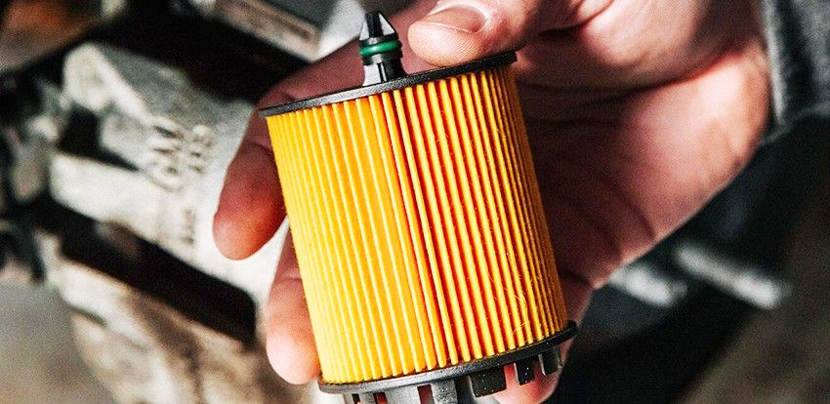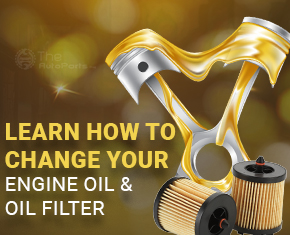One of the most vital and significant maintenance things on your vehicle is changing the engine oil & the oil filter. No matter you choose DIY or get it replaced by a professional, replacing the same frequently is undoubtedly a paramount in order to keep your car’s engine up and running.
Moreover, your driving pattern also affects how frequently you change your car’s engine oil. In case you do several drives to the city or other short tours, you would require to change your vehicle’s oil filter more frequently than others who mostly drive on highways only.
Hauling a truck, riding in harsh weather, or driving in the mountains may necessitate more regular oil filter changes.
The trick to oil filter renewal is to change the filter before it gets blocked or unclean enough to cause engine harm. Changing your oil filter with a high-quality oil filter can guarantee that your engine lasts as long as possible.
Here are some car maintenance equipment that you will probably require before opening the bonnet of your vehicle if you have chosen DIY;
1. The appropriate amount of premium grade engine oil – also learn which oil is best for your vehicle.
2. A premium oil filter (see to your owner’s handbook for details).
3. Socket wrenches
4. A wrench for oil filters
5. Rags
6. An engine oil pan to catch the used engine oil
7. A funnel
So, Let’s Get Started To Learn How to Change Your Engine Oil & Oil Filter:

#1. Clear – out the old used engine oil
1. Turn on your vehicle and keep it in running condition for a few minutes prior to emptying the engine oil, or give it a fast lap around the lot. This will heat up the engine oil and enable the draining process to go more easily. Ensure you select a safe location to change your oil first; either a driveway or a garage would suffice, and flat ground is a prerequisite.
2.Put the oil container & drain plug underneath the car. The engine might be heated, so please be mindful of it. Before trying to find that drain plug, make sure the engine is cold enough to touch.
3.To access underneath the automobile, you might need to jack it up. Always utilize a jack stand instead of climbing underneath a car that is only being supported by a jack.
4.Put out the newspaper and set the oil tray below once you’ve located the drain stop. With the help of a socket wrench, loosen the drain plug by rotating it counterclockwise.
5.After loosening, detach the plug by hand slowly and allow the engine oil to drain out.
Caution: Perhaps the engine oil is hot. When the engine oil starts streaming slowly, reinstall the drain plug manually & tighten it clockwise with a wrench.
#2. Change the oil filter
1.Find out the oil filter and put the oil drain pan beneath the car.
2.With the help of a filter wrench, crank it counterclockwise to loosen it. Manually remove the oil filter.
3.Sprinkle a very little engine oil to a fresh gasket before fitting the latest oil filter. By doing this, the gasket won’t stick, fracture, or lead to an oil leakage.
4.New oil filter then needs to be manually installed and tightened.
#3. Put in the new engine oil*
It’s time to add fresh engine oil at this point. Utilize our product picker to choose which oil is best for your car. Remember that the owner’s manual’s prior instructions for the required quality and quantity of engine oil should be followed.
1.Put the engine oil by loosening the oil-filler cap for the tank. It will be wise to use a funnel to avoid spills. When completed, reinstall oil cap & clean up any engine oil that has spilt. For the new engine oil to circulate fully, turn on your engine & let it run for 1-2 minute.
2.You’re nearly finished. You need to examine the oil level first, so don’t start the car just yet. To accomplish this, halt the vehicle and take the dipstick out to be cleaned.
3.Re-insert & remove it, making sure the oil has the proper reading this time. Put that cap back on, then congratulate yourself.
#4. Recycle and cleanse your engine oil.
1.Put the old oil filter in a plastic container and pour the used engine oil from the pan into the used oil pan.
2.Recycling motor oil is the ideal technique to get rid of it. Some gas stations will gladly accept discarded oil filters and engine oil at no cost.
3.Lastly, dispose of the greasy rags in a responsible manner, being sure to follow all applicable laws.
4.To keep track of when your next oil change is required, note the date and time you changed the oil and how many miles the automobile has. 5.Don’t forget to do routine engine oil changes.
Kudos! You changed your engine oil, which helped you save a load of money. That feels fantastic, doesn’t it?
Premium engine oil filters have a bypass valve that controls the oil pressure inside the oil filter as a defense against oil filter blockage. This bypass valve would open if the oil filter were to entirely clog, enabling oil to keep flowing into your engine. The oil would, however, be soiled, unfiltered oil that had eluded the oil filter. Your engine would have suffered permanent damage if the bypass valve hadn’t been there.
Find genuine and affordable aftermarket parts, OEM replacement parts at The Auto Parts Shop now!
